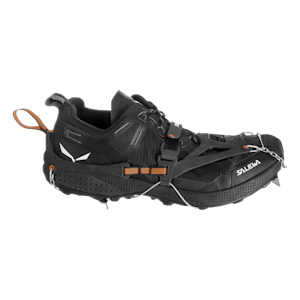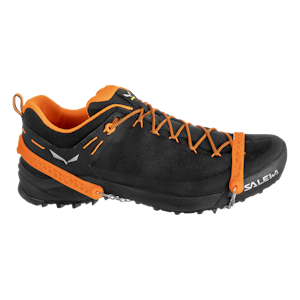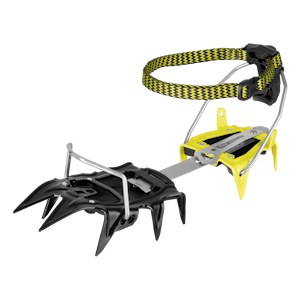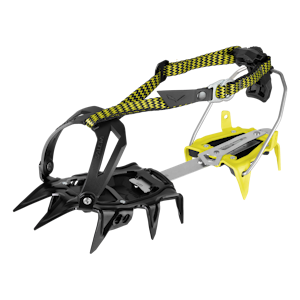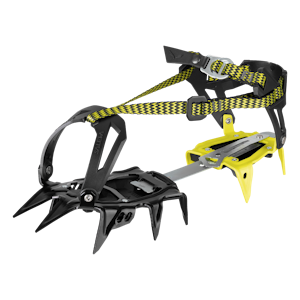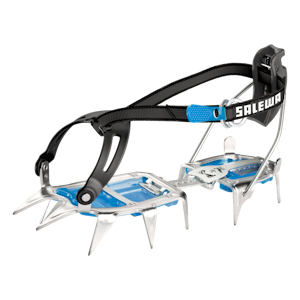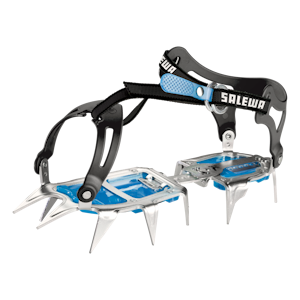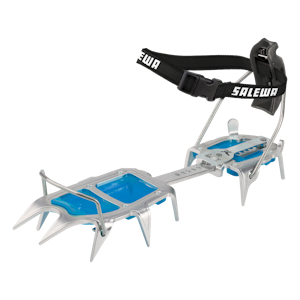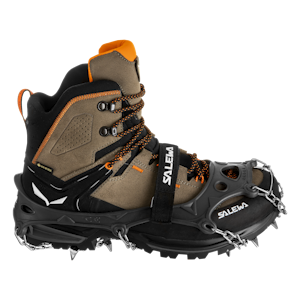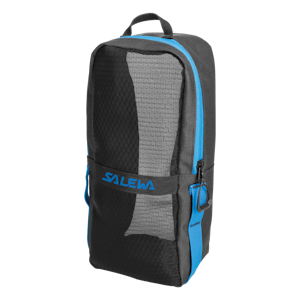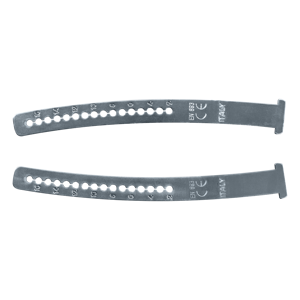Crampons
(13 Products)How to choose crampons
Crampons give you the traction you need to move on ice and hard-packed snow. There are a number of different types available. Choosing the right pair depends on the main style of climbing you plan to do.
What crampons do I need?
- Technical crampons for ice climbing
For vertical ice and mixed routes, you want rigid crampons. Made for alpinism and mountaineering, their stiff construction is primarily designed so that you can load them with your whole weight. However, this makes them strenuous to walk in over long periods. - Crampons for climbing snow and crossing glaciers
Flexible crampons are designed to flex with your and make walking more natural. They are the right choice if you plan on more hiking than technical climbing.
Do I need special boots for crampons?
Crampons need to be fully compatible with the boots they are fitted to, so they work correctly.
- Rigid boots
For rigid crampons, you need a rigid boot. Most ice climbing boots, especially more technical models, are very rigid. - Flexible crampons
Flexible crampons work best with – you got it – flexible boots. They can be used on vertical ice with a very stiff boot, but won’t climb as well as rigid crampons.
Which crampon bindings?
There are three different systems for attaching crampons to boots: step-in, hybrid and strap-on. The binding you need will depend on your boot.
How do I know if my boots are crampon compatible?
Do you have technical, rigid mountaineering boots with a toe or heel welt? If they have both, then they will accept most types of crampon. Less technical, more flexible (i.e. comfortable) hiking boots without welts will only accept crampons with straps, but might take hybrid models.
How tight should crampons be?
Once your crampons fit securely and you have threaded all the straps, feed them through the D-rings on the outside of your boot. Make sure there are no twists and that the ends are secured and tucked away so that you won’t trip and stumble over them. If your straps seem excessively long, then cut off the excess. Careful not to over tighten the straps though, as this might restrict blood circulation and leave you with cold feet.
When to use spikes vs crampons?
Spikes offer good additional traction on icy and snow-covered tracks or low-angle slopes, but only limited protection on higher-angle slopes. However, they are far more comfortable than crampons for walking into remote crags if the terrain is flat, but icy.
For everything else, full crampons cover all bases and are the way to go.


